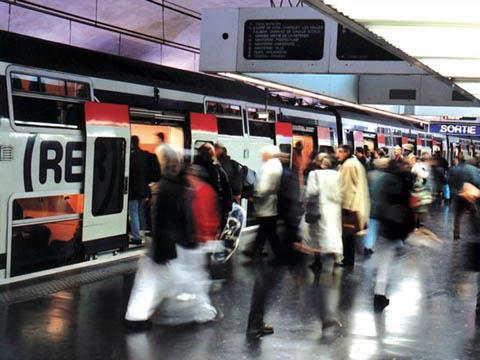
FRANCE: The government and Ile-de-France transport authority STIF have announced a 10-point strategy to improve the reliability of the rail network serving Paris and its suburbs. A total of €7bn is to be invested by 2017, with €2bn allocated to the RER network alongside the metro projects confirmed on March 6.
With the aim of relieving RER Line A, €1·1bn is to be spent on extending Line E westwards from Haussmann-Saint-Lazare to La Défense and Mantes-la-Jolie. It is hoped to begin work in 2015 for opening around 2020.
The existing RER network has been allocated €900m to implement action plans for each route developed by STIF in conjunction with RATP, RFF and SNCF. These include resignalling, upgrading power supplies, grade-separating junctions and providing additional turnback facilities, as well as rolling stock improvements, all aimed at improving operational resilience.
RFF and SNCF are to investment between €400m and €500m to improve service quality, with short-term measures to include station refurbishment, improving information systems and reinforced security. More lineside fencing is to be installed. Rolling stock reliability is to be improved by installing remote diagnostic systems on the lines C and D fleets, with extra stabling and maintenance facilities provided so that trains are closest to where they are needed.
Initiatives to improve network performance include preventive replacement of electronic signalling components and additional platforms to improve traffic flow.
RFF and SNCF have been directed to develop better joint arrangements for the planning and delivery of infrastructure projects, reflecting the ‘exceptional complexity’ of the Ile-de-France network. They are also instructed to start work on creating a single infrastructure management organisation for the region, as a pilot for the national network, responsible for operations, infrastructure maintenance and modernisation.
Unified management is to be introduced in October on RER Line B, currently operated jointly by RATP and SNCF. A working group is to report before mid-2013 on how this is to be achieved for Line A.
Other measures to reduce disruption include new procedures allowing drivers to proceed at caution rather than keep trains at a stand. Following the training of 15000 drivers these are expected to come into force during early 2014, the new operating rules complemented by alerts sent by GSM-R which is due to be rolled out on the Ile-de-France network in 2015.
Procedures are also to be improved for dealing with disruption following suicides, of which there are over 450 a year on the Ile-de-France network. As part of its €30m 2013-14 action plan, RFF is to invest €9m in measures to tackle cable theft, including alarm systems to protect the most vulnerable locations, burying cables and developing alternatives to copper.

















